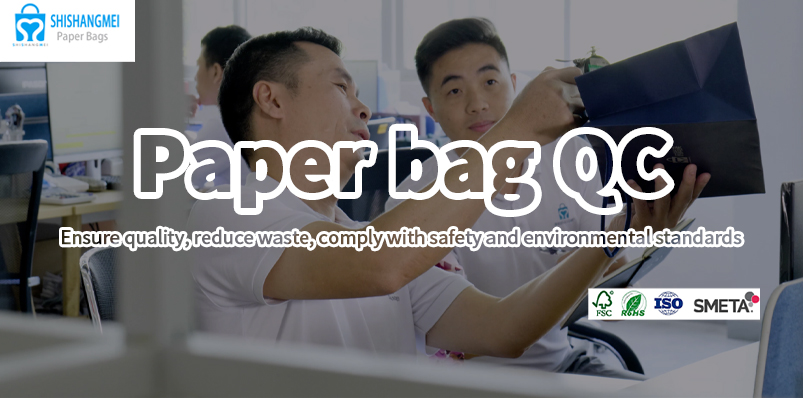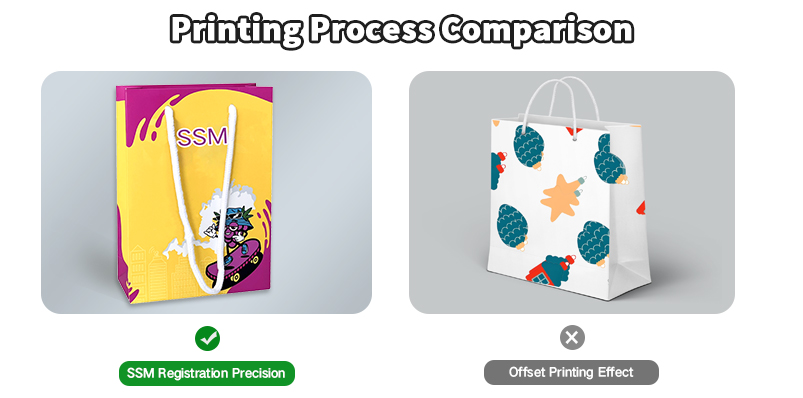
The comprehensive requirements that qualified paper bags need to meet
2025-05-24 17:01The comprehensive requirements that qualified paper bags need to meet
Paper bags, as important carriers in fields such as food packaging, retail shopping, and gift packaging, need to meet the strict standards of the European and American markets in terms of material safety, physical properties, environmental compliance, and printing quality. The following analyzes the core elements for paper bags to become "qualified products" from the perspectives of technical specifications, regulatory requirements, and user experience, combined with international testing data and cases.
Material safety and food-grade compliance
In the environmental debate between paper bags and plastic bags, we delved deeply into the specific impact of paper bags on the environment. Paper bags, which are often regarded as eco-friendly alternatives to shopping bags, do not have a life cycle as pure as people think. Although paper bags are made from renewable resources, their manufacturing process is accompanied by high energy consumption and water resource consumption, and may even involve the use of toxic chemicals. Compared with plastic bags, paper bags emit 70% more air pollutants during the production stage.
However, paper bags are not without highlights. In terms of biodegradability, paper bags have demonstrated a significant advantage. Their decomposition rate is much faster than that of plastic bags, and they can naturally degrade within just a few weeks to a few months, effectively reducing the burden on the environment caused by landfill sites. In addition, paper bags also perform well in recycling and are more easily accepted by recycling projects. Compared with plastic bags, their processing methods are undoubtedly more environmentally friendly and sustainable.
However, the production process of paper bags also brings about a carbon footprint that cannot be ignored. According to a study by the UK Environment Agency, paper bags need to be used at least three times to outperform plastic bags in terms of biodegradability and recyclability, thereby achieving a balance in overall environmental impact. This discovery highlights the problem of high energy consumption in the production process of paper bags.
Meanwhile, the environmental impact of tree felling on paper bags should not be undere.
Physical properties and durability:
Paper bags need to pass tests such as drop, tensile strength, and sealing strength to ensure the reliability of transportation and use.
· Tensile force and drop test: According to the SN/T 0268-2014 standard, paper-plastic composite bags need to withstand a tensile force of ≥500N, and there should be no damage or leakage of the contents after being dropped from a height of 1.2 meters three times.
· Creasing and cutting edge process: The depth of the creasing line should be half of the thickness of the cardboard. The cutting edge should be free of burrs, and the corrugation edges should be regular to prevent tearing due to structural defects during transportation.
· Sealing strength: The bonding or nailing parts must be firm. For example, the lap tongue width of a double corrugated box should not be less than 30mm, and the scissors difference (deviation at the bonding part) for large boxes should be ≤5mm.
Case: A certain e-commerce platform in Germany saw a 23% increase in consumer complaints due to poor sealing of paper bags, which led to product damage. Later, the problem was solved by using hot melt adhesive bonding technology.

Printing and appearance standards
The printing quality directly affects the brand image and needs to meet the following requirements:
· Hue consistency: The hue deviation within the same batch is ≤5%, and between different batches is ≤8%. For spot colors, the color sample needs to be confirmed by the customer.
· Registration accuracy: Color registration offset ≤1mm, and the tilt does not exceed 0.5% of the length of the graphics and text.
· Environmentally friendly ink: Water-based ink free of heavy metals and volatile organic compounds (VOCs) is used, meeting the requirements of the EU REACH regulation and California Proposition 65.
Design Trend: Taiwanese designer Nie Yongzhen's gradient color scheme for food packaging enhances consumers' purchasing desire through color psychology while ensuring that the ink passes FDA testing.

Environmental Protection and Sustainability Certification
The environmental protection requirements in the European and American markets are strict. Paper bags need to meet:
· Recyclability: Use FSC-certified sustainable forest paper or add degradable coatings (such as PLA).
· German Packaging Law (VerpackG) : Paper bags exported to Germany need to register an EPR number and join the dual-track recycling system (such as Green Dot Der Grune Punkt), and declare the packaging type and weight.
· Carbon Footprint Statement: Some customers require a Life cycle assessment (LCA) report to prove the carbon emission data from raw materials to disposal.
Data: In 2024, the new EU regulations require that the recycling rate of paper packaging be increased to 75%, and non-compliant enterprises will face a fine of up to 100,000 euros.

Qualified paper bags need to strike a balance among safety, performance, environmental protection and design. Enterprises should optimize costs in combination with Value Engineering. For example, they can save 12% of paper through scientific material arrangement, and at the same time pay attention to regulatory developments (such as the new EU regulations on food contact materials in 2024). Only by meeting standards in multiple dimensions can one stand out in the highly competitive European and American markets.

